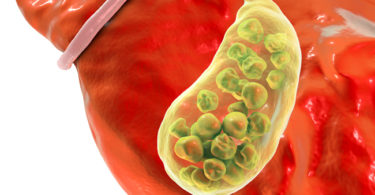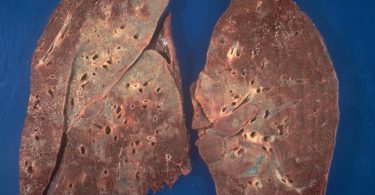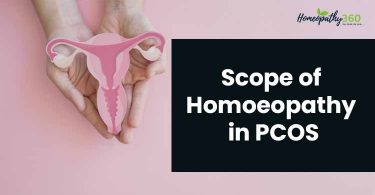AUTHORS:
DR SHIVAPRASAD K. (HOD, PROFESSOR, DEPARTMENT OF ORGANON OF MEDICINE, FATHER MULLER
HOMOEOPATHIC MEDICAL COLLEGE AND HOSPITAL- DERALAKATTE)
CO-AUTHOR:
DR DEEPA PAIS (ASSISTANT PROFESSOR, DEPARTMENT OF PATHOLOGY & MICROBIOLOGY FATHER MULLER HOMEOPATHIC MEDICAL COLLEGE & HOSPITAL MANGALORE)
DR ANANTHAKRISHNAN V A (PG SCHOLAR -MD – II DEPARTMENT OF ORGANON OF MEDICINE) FATHER MULLER HOMOEOPATHIC MEDICAL COLLEGE AND HOSPITAL MANGALORE).
ABSTRACT:
BACKGROUND: This article tells us about effectiveness of Homoeopathy in the treatment of diabetic foot Gangrene, and also gives a treatment plan with evidence in proving the improvement in the quality of life the patient in detail. This case study highlights the practical utility of Richard Hughes concepts in Clinical Practice Methodology
METHODS: Specific totalities based on the different phase of the disease is analysed and appropriate totalities were constructed and applied accordingly using Richard Hughes concepts.
CONCLUSION: Helps us to understand the Process of homoeopathic treatment of a diabetic foot gangrene & how helpful Homoeopathic treatment is in enhancing the quality of life of such individuals suffering from gangrene as well as how homoeopathy avoids amputation of the whole foot as well as how it regulates auto amputation of affected toes naturally without any complications is demonstrated in the case study.
KEYWORDS: Miasm, Gangrene, Homeopathy Type 2 diabetes mellitus, diabetic foot ulcers, diabetic foot gangrene, peripheral vasculopathy.
INTRODUCTION
Type 2 diabetes is a life style disorder, if not treated can bring on man from ability to disability. One
of the major complications of type 2 DM is peripheral vasculopathy which in progress leads to
diabetic foot ulcers and gangrene 1. Foot ulcers offers 15% life time risks for all diabetic patients 2. The
estimated prevalence of DFU ranges from 4%-27% 3. In this article we will discuss a case of diabetic
foot gangrene which was progressing day by day and was successfully managed by homoeopathic
treatment. This article is also an evidence of how homoeopathy stops the progression of diabetic
gangrene and also how it promotes auto amputation setting aside all other complications.
Background of this case Study speaks about the inception of Huges concept how it has undergone various modification in the treatment method and many other concepts according to the change had come during their time period such as J. T. Kent, H.A. Roberts, Stuart Close, Dunham, Dudgeon etc., had their own methodology of Homoeopathic practice, these stalwarts rarely stood out of Hahnemannian concepts except one that is Richard Hughes.
PRELIMINARY DATA
Name: Mr. K
Age: 66 years
Sex: Male
Address: Kerala
Religion: Islam
Occupation: Cook
Marital status: Married
Date of Admission: 10/12/2019
PRESENTING COMPLAINTS
Patient complains of painful wound in the left foot since 6 months. There is also blackish discoloration of second & third toe of left leg. Amputation of his fourth & fifth toe of left leg was done before 6 days.
| Location, Extension, Duration | Sensation & Pathology | A/F, Modalities | Accompaniments |
| Left foot (lateral aspect of base of big toe to base of 5th toe) Since 6 months Left foot 2nd & 3rd toe Since 3 days | Ulcer Offensive watery discharge Painful Blackish discolouration Pulling pain over plantar aspect of foot Burning (occ) | <night <touch <night <afternoon <pressure | Sleep : Disturbed due to pain Appetite : Decreased Thirst : Decreased |
HISTORY OF PRESENTING COMPLAINTS
Before 6 months patient started with a painful wound in the base of 5th toe of his left foot which then progressed and extended up to the base of big toe. He was under allopathic medication. Before 20 days due to severe pain he was admitted in hospital. Then on he developed with blackish discoloration of 4th & 5th toe. He then underwent amputation of his 4th & 5th toe of left leg before 6 days. Before 3 days he started on with blackish discoloration of 2nd & 3rd toes too. He took a voluntary discharge from the hospital following that. Presently he complains of pain and blackish discoloration of 2nd & 3rd toe with offensive watery discharge. He had chills & feverish feeling before 1 day.
There is no history of bleeding, redness, loss of sensation & weight loss.
Patient is known diabetic since 25yrs and is under allopathic medication.
PAST MEDICAL HISTORY
Childhood – chicken pox
PAST TREATMENT HISTORY
Allopathic medication for Ischemic Heart Disease
Known Hypertensive since 20 years
Known Diabetic since 25 years
PAST SURGICAL HISTORY
In 2010 – Bypass surgery
ALLERGIC HISTORY
Nothing significant
FAMILY HISTORY
Father – Hernia
Brother – DM
PERSONAL HISTORY
Diet – Mixed
Bowel habits – 1 time/day
Bladder habits – 4 to 5 times/day, no difficulty
Dreams – Nil
Perspiration – Decreased, partial on chest & underarms
Thermals – HOT
Addictions :- Cigarette smoking which started at his 20 years of age. He stopped it 2 months back
LIFE SPACE INVESTIGATIONS
Patient hailed from a low socioeconomic family, living with his parents, 1 elder brother, 1 younger brother and 1 younger sister. There was severe financial crisis for continuing his higher studies. So he started to work in small industries, hotels etc for his daily earnings. He got married at 32yrs of age.
During a medical fitness test conducted to apply for visa for going broad he was diagnosed with some cardiac troubles. He then tried some other ways to reach finally abroad where he was working as a cook. Once when he was back in India, he got MI and had to do a bypass surgery.
As a person
- He is very stubborn in his decisions
- Doesn’t want to be a burden for anyone
- Wants to be perfect in time and work, he himself and others too
- Likes company
Since 1 month he is
- Highly irritable
- Restless
- Easily angered
- Wants to spend more time with himself
- Shouts at his wife & bystanders
- Doesn’t want to share about his feelings to others
GENERAL PHYSICAL EXAMINATION
Vital Signs :
BP : 140/70 mmHg
Pulse : 94/min
Respiratory rate : 22 bpm
Temperature : Afebrile at time of examination
ULCER EXAMINATION:
Blackish discoloration of 2nd & 3rd left toe (gangrenous appearance)
Ulcer after amputation of 4th & 5th toe of left leg
Number : 2
Size : 7cm × 8cm
Shape : oval
Offensive discharge
Thick, hard slough present
Tenderness : +++
Pulsations : present
Local rise of temperature : absent
SECTOR TOTALITY
- Gangrene of the toes
- Painful ulcer with offensive watery discharge; pain <night, touch
- Burning occasionally
- Sleep disturbed due to pain
- Appetite = decreased
- Thirst = decreased
REPRTORIAL TOTALITY (Synthesis repertory)
- EXTREMITIES – Pain – Feet – Burning
- SKIN – Gangrene
- GANGRENE – Dry
- GANGRENE – Old people
- DIABETES MELLITUS- Gangrene
Secale cor = 11/5
Arsenicum alb = 8/4
Carbo veg = 5/3
Lachesis = 4/3
Mercurius = 4/3
FIRST PRESCRIPTION (11/12/2019)
Rx
1. Secale Cor 30 (1-1-1)
2. Syzigium Q (20-20-20)
Cleaning & Dressing done with Echinacea Q dry
- Maintain Diabetic chart
- Maintain Diabetic diet
- Maintain Temperature Chart TDS
19/12/2019 = Syphillinum 200/1P (EMES)
FOLLOW UP CRITERIA
- Appetite
- Thirst
- Sleep
- Pain in ulcer on left foot
- Gangrenous discoloration
- Offensive discharge
- Feverish feeling
- Chilliness
- Itching
- Dryness of skin
- Pain in plantar aspect of foot
- Headache
23/12/2019
| 1 | 2 | 3 | 4 | 5 | 6 | 7 | 8 | 9 | 10 | 11 | 12 |
| G | G | G | P | S | S | A | A | S | S | P | A |
New lesions appearing
Older ones are healing
Rx
- Echinacea 6 (4 pills 2 hourly)
- Mag Phos 6X (2-2-2)
- Syzigium Q (20-20-20)
- C & D with Echinacea Q dry
1/1/2020 = Syphillinum 200/1P EMES
6/1/2020
| 1 | 2 | 3 | 4 | 5 | 6 | 7 | 8 | 9 | 10 | 11 | 12 |
| G | G | Disturbed | > | > | A | A | A | > | > | P | A |
Rx
- Echinacea 30 (1-1-1)
- Mag Phos 6x (2-2-2)
- Syzigium Q (20-20-20)
- C & D with Echinacea Q dry
9/1/2020
| 1 | 2 | 3 | 4 | 5 | 6 | 7 | 8 | 9 | 10 | 11 | 12 |
| G | G | Disturbed | < | > | A | A | A | > | > | > | A |
Injury bleeding on slightest touch
Pus pockets present
Rx
- Arnica 30 (4pills/2hrly)
- Mag Phos 6x (2-2-2)
- Syzigium Q (20-20-20)
- C & D with Echinacea Q dry
18/1/2020
| 1 | 2 | 3 | 4 | 5 | 6 | 7 | 8 | 9 | 10 | 11 | 12 |
| G | G | Disturbed | P | > | P | A | A | A | > | P | A |
Stool = Hard, not passed since last 2 days
Rx
- Staphysagria 30 (1-1-1)
- Mag Phos 6x (2-2-2)
- Syzigium Q (20-20-20)
- C & D with Echinacea Q dry
23/1/2020
| 1 | 2 | 3 | 4 | 5 | 6 | 7 | 8 | 9 | 10 | 11 | 12 |
| G | G | G | P | > | P | A | A | A | A | P | A |
New lesions appearing
Rx
- C & D with Gun Powder 6x
- Staphysagria 30 (1-1-1)
- Mag Phos 6x (2-2-2)
- Syzigium Q (20-20-20)
31/1/2020
| 1 | 2 | 3 | 4 | 5 | 6 | 7 | 8 | 9 | 10 | 11 | 12 |
| G | G | G | + | S | ++ | A | A | A | A | > | A |
Rx
- Secale cor 30 (1-1-1)
- Mag Phos 6x (2-2-2)
- Syzigium Q (20-20-20)
- C & D with Gun Powder 6x
7/2/2020
| 1 | 2 | 3 | 4 | 5 | 6 | 7 | 8 | 9 | 10 | 11 | 12 |
| G | G | G | + | P | ++ | A | A | A | A | p | A |
Gangrene & ulcer persists
Offensive discharge +
Pain with burning +
O/E = dark discharge with offensiveness, slough formation seen
Rx
- Anthracinum 30 (1-1-1)
- Mag Phos 6x (2-2-2)
- Syzigium Q (20-20-20)
- C & D with Gun Powder 6X
22/2/2020 = Syphillinum 1M/1P HS
9/3/2020 = Syphillinum 1M/1P HS
21/3/2020
| 1 | 2 | 3 | 4 | 5 | 6 | 7 | 8 | 9 | 10 | 11 | 12 |
| G | G | G | > | > | > | A | A | A | A | > | < |
Headache : Right sided, bursting type of pain, extending from frontal region to right temporal region
Pain > by closing eyes, pressure
Rx :
- Bryonia 30/ 1P stat
- Bryonia 30/1P SOS
- Other medicines continue
12/5/2020 = Syphillinum 1M/1P HS
16/5/2020 (DISCHARGE)
| 1 | 2 | 3 | 4 | 5 | 6 | 7 | 8 | 9 | 10 | 11 | 12 |
| G | G | G | A | A | A | A | A | A | A | A | A |
Rx
- SL packet/8P once in 4 days HS
- Mag phos 6X (2-2-2-2)
- Syzigium Q (20-20-20)
- 5gr tab (1-1-1)
- Gun powder 6X external application
BEFORE TREATMENT, on admit (month of December)
MONTH OF JANUARY
MONTH OF MARCH
MONTH OF APRIL
AFTER TREATMENT, During discharge (month of may).
CONCLUSION:
This case shows the effectiveness of Homoeopathic treatment in avoiding the amputation of the diabetic foot gangrene as well as improving the quality of life of the patient. The concept of specific totality of Richard huges is used and the similimum to the totality as the requirement of the case was given to halt the progression of the disease and accelerate the susceptibility of the patient to react for the treatment by stimulating the Vital force
As we all know that Richard Hughes criticized few concepts of Hahnemann and because of this he faced lot of criticism inside Homoeopathic world. He courageously said that we should be Homoeopathist not Hahnemannian and questioned existence and validity of Vital Force, Psora Theory and Drug dynamization. With all the oppositions he proved the usefulness of his theories. Richard Hughes put forward his views on Homoeopathy based on the development of other contemporary sciences. He concentrated more on pathogeneses and used lower potencies in his treatment. Thus, the same principles of Richard Huges were used to treat this case4.
REFERENCE:
1. Boyko EJ, Ahroni JH, Stensel V, Forsberg RC, Davignon DR, Smith DG. A prospective study
of risk factors for diabetic foot ulcer. The Seattle Diabetic Foot Study. Diabetes care. 1999 Jul
1;22(7):1036-42.
2. Fard AS, Esmaelzadeh M, Larijani B. Assessment and treatment of diabetic foot ulcer.
International journal of clinical practice. 2007 Nov;61(11):1931-8.
3. Yazdanpanah L, Nasiri M, Adarvishi S. Literature review on the management of diabetic foot
ulcer. World journal of diabetes. 2015 Feb 15;6(1):37.
4. cited on 20/08/2020





